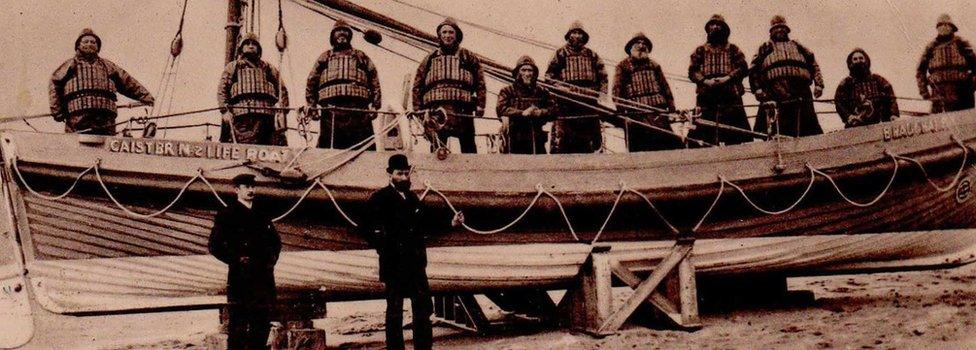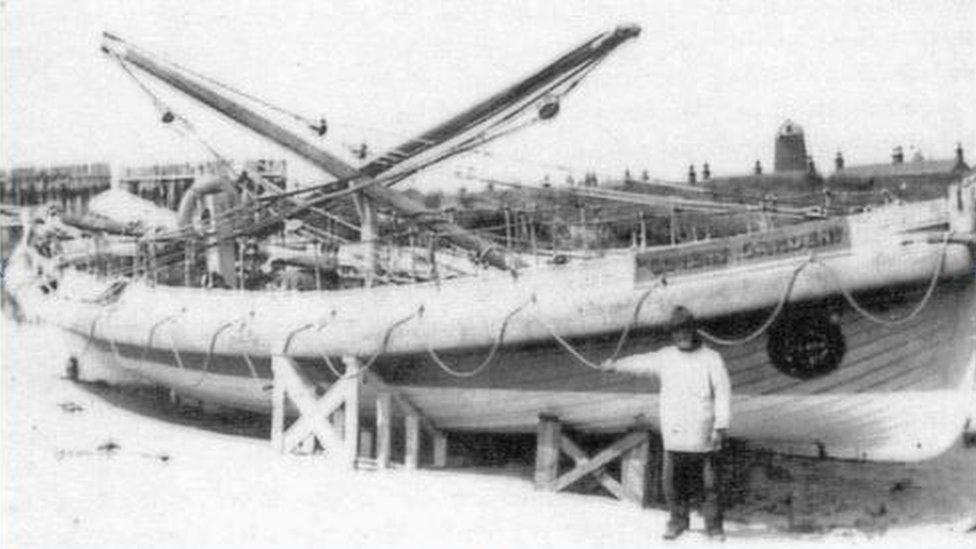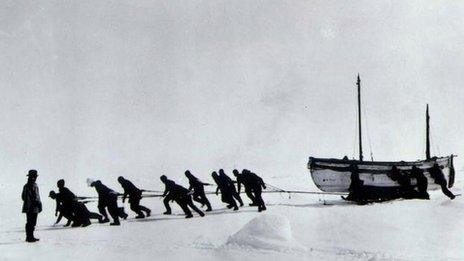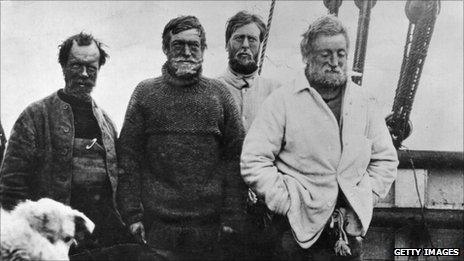Caister Lifeboat's 1919 rescue attempt remembered
- Published

John "Spratt" Haylett (front row centre) "continued the tradition of volunteers risking their own lives"
The actions of a "heroic" lifeboat coxswain are being remembered on the centenary of an attempted rescue of the crew of a coal ship.
The Nimrod was ferrying goods in the North Sea when it ran aground off Norfolk on 29 January 1919.
John "Spratt" Haylett, the Caister Lifeboat coxswain, was injured in the rescue and died on 11 March.
Caister Lifeboat secretary Derek George said Spratt continued the tradition of "Caister men never turn back".
The phrase was attributed by Spratt's uncle James Haylett, who also served with the town's lifeboat.

The early lifeboats were powered by a combination of oar and sail
James Haylett had seen eight of his colleagues on the Beachamp lifeboat killed during a storm in 1901.
Mr George said: "James Haylett coined that phrase, which is now world famous.
"Spratt continued in that tradition of volunteers risking their own lives to save others.
"The feats they performed were often beyond belief - reflected in the fact that Caister station saved more lives than any other station in the UK during the 112 years of RNLI management [1857-1969].

The Nimrod had previously been used by Sir Ernest Shackleton on his Antarctic expeditions
A church service is being held in memory of Spratt at Caister parish church on Sunday.
The Nimrod, which had been Sir Ernest Shackleton's ship on one of his Antarctic explorations 1907-09, was transporting coal from Hull to Calais when it ran aground on the Barber Sands off Great Yarmouth in 1919.
It broke up immediately, and only two of its 11 crew survived in the gale and blizzard conditions.
Mr George said: "During the difficult mercy bid, the heroic Coxswain Haylett sustained serious internal injuries exacerbated by complications."
The lifeboat Covent Garden III was launched, but the Nimrod's two survivors actually made it to shore by clinging onto their own ship's upturned lifeboat.
The RNLI stopped running a lifeboat station in Caister in 1969, when volunteers decided to turn it into an independent lifeboat station - so it is also celebrating the 50th anniversary of that event this year.

The Caister lifeboat crew were using the Covent Garden III vessel at the time of the 1919 rescue attempt

The current Caister lifeboat is launched by being taken to the shore by a special tractor crew
- Published29 December 2011

- Published29 September 2011
